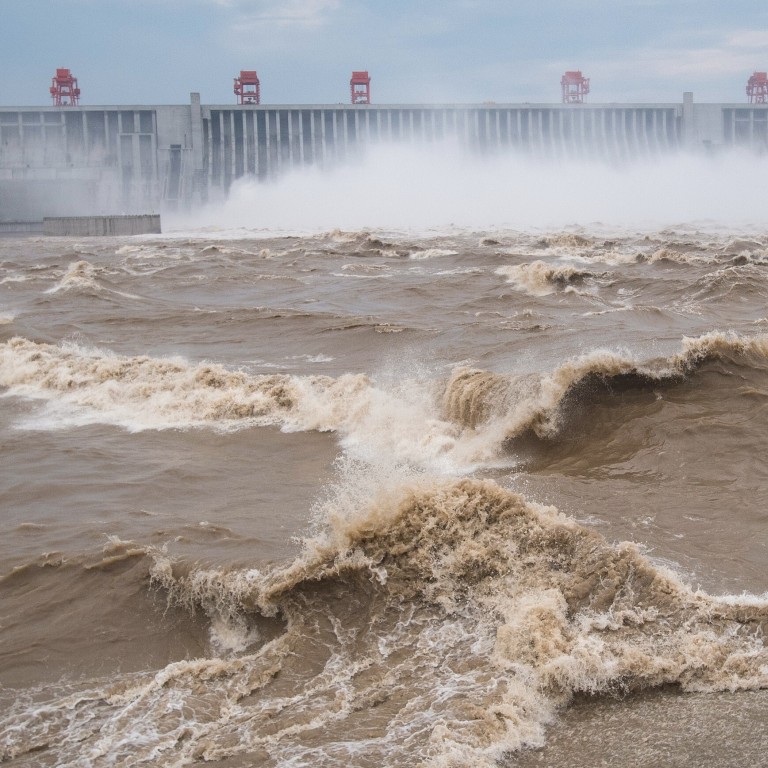
Drop by drop, China’s Yangtze River is drying up
- The levels of the massive waterway were long thought to be constant but researchers say they have calculated the scale of the decline
- The river’s ill health is due to various factors and has far-reaching consequences, experts say
The biggest river in China is drying up.
After examining decades of records from ground stations and satellite images, government researchers estimate that the average level of the Yangtze River has fallen by about 2cm (0.8 inches) every five years since the 1980s.
Researchers warn that the overall decline of the waterway could have a great impact on the environment and economy of one of the richest, fastest-growing parts of the country.

03:17
China’s Yangtze fishing communities struggle amid 10-year fishing ban
Home to 460 million people, the Yangtze region encompasses the economic powerhouse of Shanghai and accounts for more than a third of China’s GDP.
Throughout history, its water resources have been a source of wealth, enabling food production and transport.
As industrial activities increased, more than 1,000 lakes disappeared along the waterway. But the belief remained that the total amount of water was more or less unchanged – based on the premise that all the used water would eventually return to the environment.
It was a difficult theory to test. The Yangtze stretches over 6,300km (3,900 miles) from Tibet to the East China Sea. Some water is on the surface, some underground, and there can be big annual variations in times and regions, making calculation difficult.
To get a closer estimate of the long-term trend over an area nearly a fifth to China’s total land mass, Nie’s team used not only records from ground stations but also satellites that could detect the change of gravity caused by water in the crust.
They concluded that climate change contributed to nearly 80 per cent of the decline, with abnormal climate events such as rising temperatures in some parts of the Pacific Ocean reducing the overall rainfall going into the Yangtze.
Warmer temperatures also increased the fluctuation of water reserves, leading to more floods and droughts, they said.
Evaporation increased as well, partly because of higher temperatures, partly because of human activities, with ever-growing cities accelerating the loss of water into the atmosphere.
The role of dams was more complex. The operations of 15 major dams including the Three Gorges caused the water levels to fall in winter and spring, but rise in warmer periods. Overall the dams had a negative, though relatively small impact, on the amount of water, according to the researchers.
Generations of fishers say goodbye to a way of life as China tries to revive the Yangtze River
Xie Zhicai, a researcher from the Institute of Hydrobiology at the Chinese Academy of Sciences in Wuhan, said less water could have ripple effects on the rest of the environment.
“[For example] the concentration of pollutants can increase in the river and poison more vulnerable species,” said Xie, who was not involved in the study.
The ecological balance could tip towards species that favoured a drier environment and if that happened too quickly, certain plants and animals could become extinct, he said.
Less water also means dams played a bigger role in water management, disrupting natural cycles. Some fish species such as sturgeon were sensitive to changes in temperature and water level.
“The disruption can affect their reproductive activities,” Xie said.
“The Yangtze is not short of water for now. The decline appears to be low. But the impact may manifest in a longer time span.”

02:17
China’s Three Gorges Dam faces severe flooding as Yangtze overflows
But a Beijing-based water scientist said the water decline in the Yangtze might be worse than the paper’s estimate. Each day, a large but undisclosed amount of water is drained from the Yangtze and channelled up north to thirsty cities including Beijing.
More than half the water consumption in the capital comes from the Yangtze, according to the municipal authorities.
“Throughout history, water distribution issues have sparked fights between regions,” said the researcher who declined to be named because of the political sensitivity of the issue.
There are signs that the central government is aware of the waterway’s decline.

